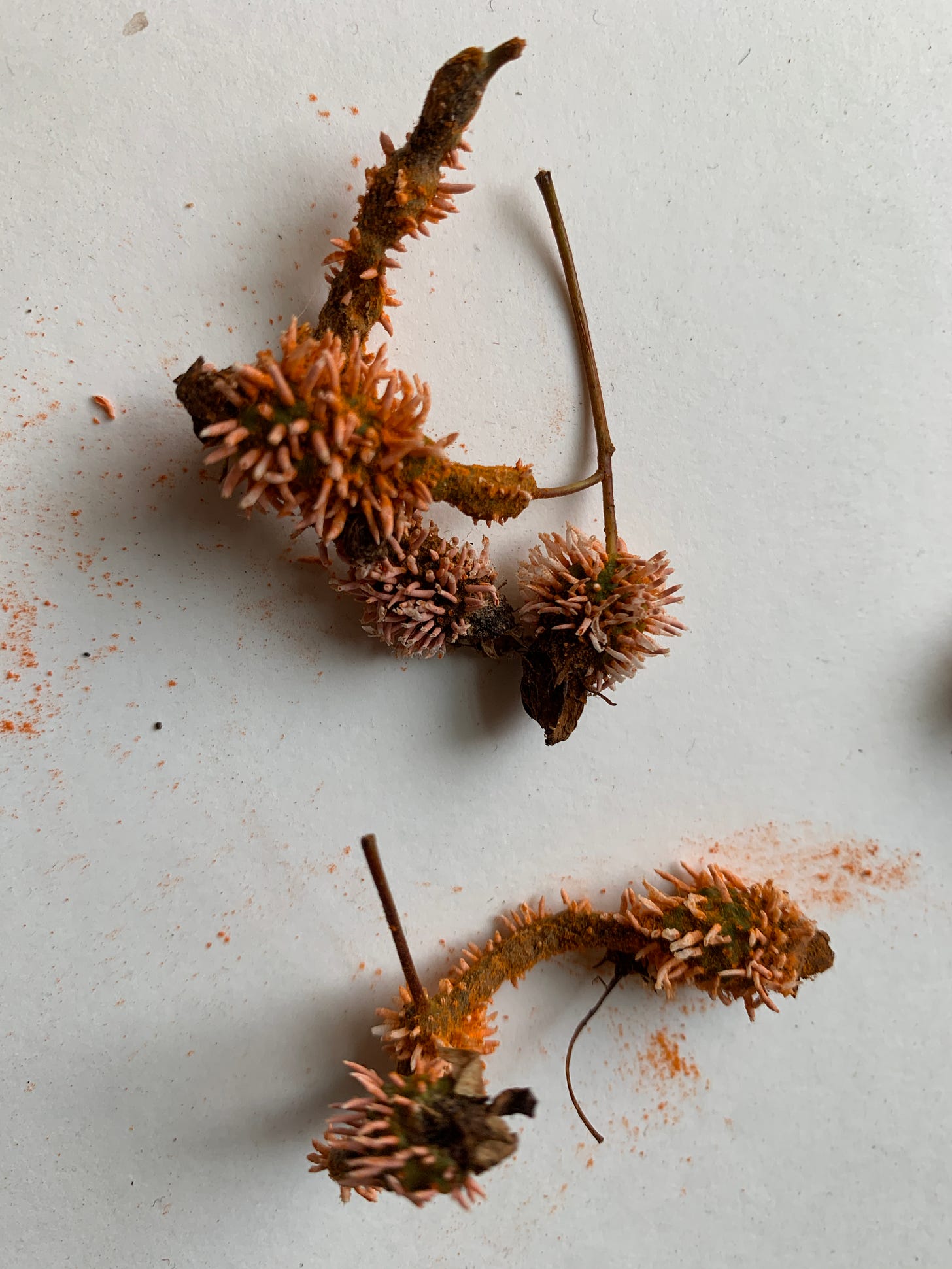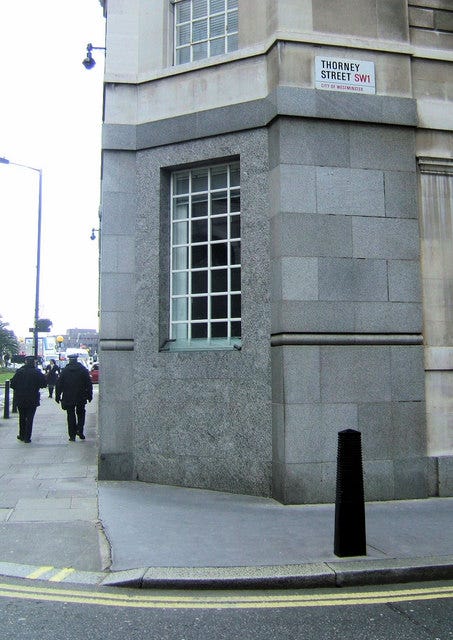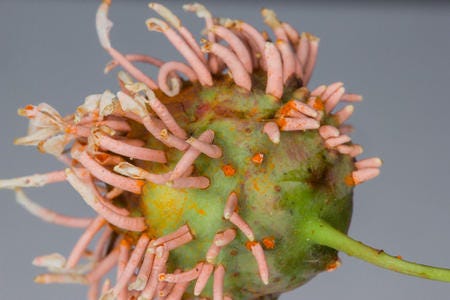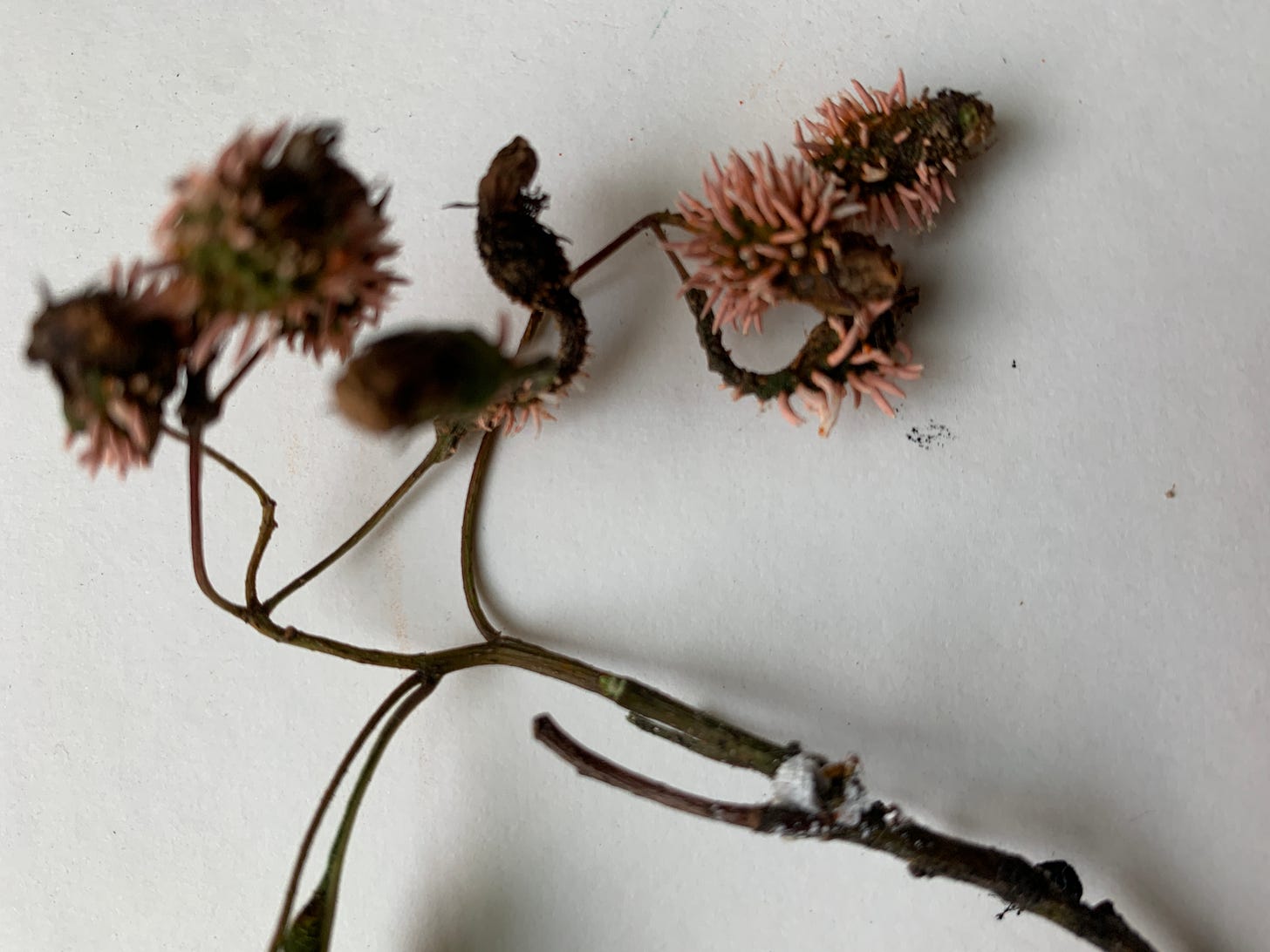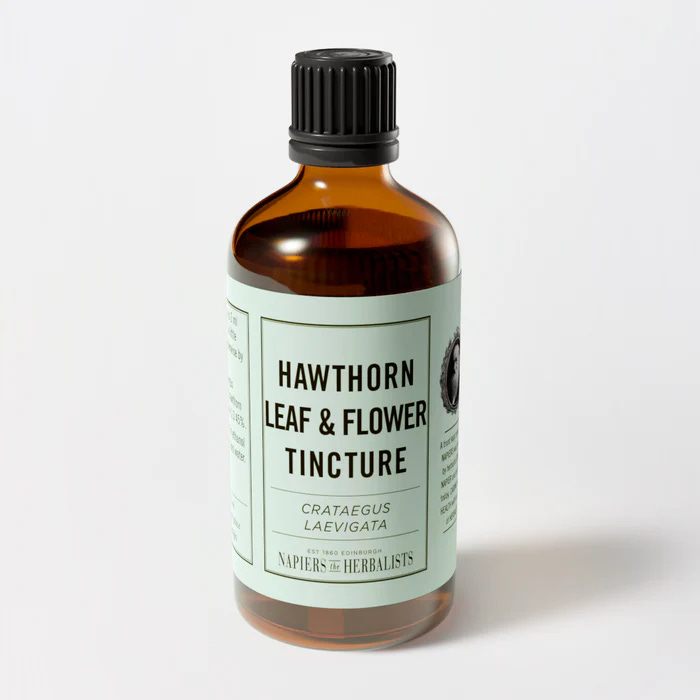Hawthorn
a world in a tree
… it might have had the sense of "hedge-rider," or "she who straddles the hedge," because the hedge was the boundary between the civilized world of the village and the wild world beyond. The hægtesse would have a foot in each reality.
—part of the Etymology of Hag
What is it about Hawthorn? Not quite a tree or a bush. Its wood used for torches in Ancient Greek wedding celebrations and wizard’s wands, its flowers a signal of summer’s beginning weddings and love but smelling of Trimethylamine that chemical of sex and death that appeared in Freud’s first famous dream. Standing alone Hawthorn is a guardian of the landscape. A lone tree cursing those who cut it down. The Bonzai growers love its twisty singularity. In community Hawthorn interlocks its thorny fingers to become a hedge. A so the word hag. A haw-hedge protects the farmed animals while defining the boundary between domestic and otherworldly. Gateways to fairy forts. A wood for wands and broomsticks and thorny crowns. And it was on the site of a sacred haw thicket called Thorney Island that Westminster Abbey burried the old pagan river and built up a whole government.
But this place didn’t seem particularly mythic. And I wasn’t looking for anything. Walking through The City down through the heat the regulars on street it was my first time down to the water in this spot my friend took me through the construction and along East Village streets that are layered with history but still almost immune to gentrification and past a dusty baseball diamond to the place where you could look across to where you can see a street in Brooklyn that cuts right across town and lines up with the street on the Manhattan side. So hot that I immersed my whole head and soaked my t-shirt in the drinking fountain and the heat felt good sweating something out and making a new day.
I wasn’t looking for anything. The jog could only go so far south along the waterfront and then the path is blocked by more construction and running back the other way it goes all the way uptown you can see the Empire State Building in the cracks between paving stones cornflower blue blur past me I will pick just the blooms for my pocket on the way back and separate the petals for a tiny plate. There’s a big oak tree over the playground but no acorns falling. Some of the planting looks new. Curated. Decorative grasses, sturdy plants and butterfly bushes lining cement cycling paths and always the heat. All the joggers have abs. We are walking now and I turn. Something catching my attention.
I wasn’t really looking but I did see. A delicate pink flowering. But is it? White and pink and peach spikey coloured petals. But are they? I know this tree. Its a kind of Hawthorn. I see its leaves. And its haws like little shrivelled apples. Its in the rose family that I love, that I have written about before. I want a coffee back in the cool apartment but the run is waking up my heart. We go in closer. And why not? There is time to stop. What looked like petals are tiny horns of colour slow-motion exploding feelers out of the little fruits of the tree. Some are more pink or peach. You might just leave it at that. A peculiar growth that is not quite a flower. But that colour. A kind of blushing. My friend notices with me. Trusting the curiosity. She examines the leaves sees an orange dust settled there. It looks like pure pigment. Touch a finger to it and it is soft orange chalk. Rust. We are in under the tree now. Drawn further in. Its different here in the tree’s world now. Cooler. Slowed time. Thorns on the lower branches protecting this magic. A kind of bower of leaves to be inside and of the tree looking up above lets you get in under it and on the underside there is more.
I did start looking. Little snowy pearls tucked into the crux meeting point of branched twigs. Snowy growths that I learn later are hawthorn mealybug in the same family as the cochineal scale insect so maybe they are an intensifier. Are they eating the rust? what is going on here. We also spotted a reddish orange mite. I am used to doing this kind of investigative work alone. But there is so much happening in this other world hidden inside the thorns.
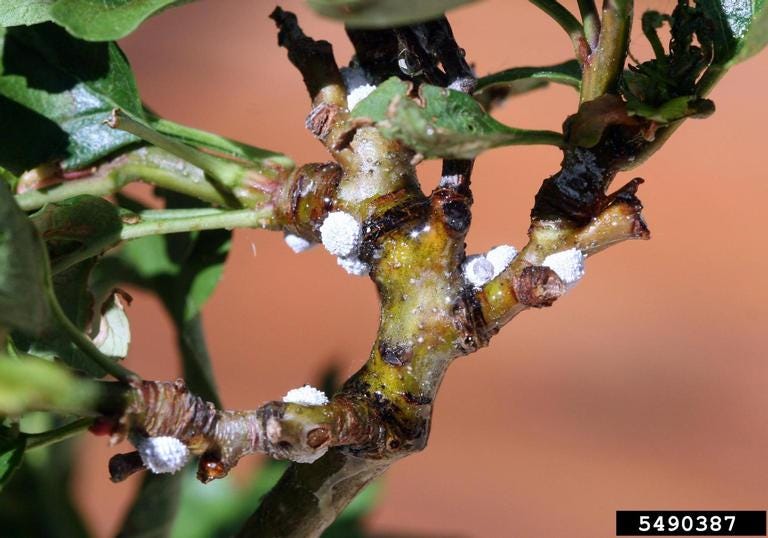
And my friend is an artist. Well aware of boundaries between worlds. And here you can feel little gateways opening to other worlds, cycles beyond our comprehension. We picked some of the most colourful specimens until our fingers were orange with it the pigment and salty sweat a kind of facepaint. My friend did offer a kerchief to fold the tiny branches with the little white puffs with the gummy tangerine sap inside and the branches with a haw on the end just about to explode with colour and the branches that had a few leaves which were covered in a layer of soft rust. We tucked up the offering into a kerchief of blue polkadot cloth for safekeeping and a second piece of cotton cloth with red polkadots two bundles of of that day. And I took them home. Two soft cotton pouches. Sleeping fireworks.
Back in Canada but not yet legally in the country I am at the border. There is barely a line and its a short flight but I am tired. A serious border guard asks me what I’m bringing in. Just a few presents for the family like t-shirts and she said wait, what is that? And I guess I usually stuff my finds deeper into the suitcase because there for the border guard to see was the of the bundle of twigs in its cloth wrapper with bright orange dust all over it. And also she said what is that!? And it wasn’t just the fungal bursting twigs I’d brought back it was also a tiny glass vial full of the mother of apple cider from a sacred place in Japan that I wanted to make into cider and then hard cider and then vinegar in three parts. I tried to say that it was an art supply because its final form as vinegar would be useful to inkmaking but she put a big black marking on my customs form.
I was ushered into the little room and I said again that all this was inkmaking supplies and there was a big stainless steel table and the border guard made me open everything up and it was the little murky vial that she was most interested in, and I told her it was fermented apples turning in there and she smelled it and closed her eyes and got a strange look on her face and said it reminds me of when I was a kid and the apples all fallen on the ground at the farm at the end of the summer she said it smelled exactly like that. And I loved the customs official for seeing that that mysterious liquid was like the space under the hawthorn tree by the river protected by thorns was a kingdom. And showed her the Korean translation of Make Ink and she did not need to ask any other questions.
Back at home I wondered other things. Why does the scale insect with the white fluff feed on the hawthorn in particular? What sort of work are the insects doing? How do they relate to the tree weakening when under attach by the spores? What or how do bacteria act as a go between plants and scale insects what sort of magic reconfiguring of molecules and protective pigments happen inside mealybugs? Do bacteria’s protective use of cartenoid pigments act as an informational bridge between plants fungi and insects? Why do the pearly white moldy grains grow at the joints of the new branches where the plant’s cells are still specializing? How does DNA figure in this? Are the mealybugs not just drinking the useful juices of the hawthorn but highjacking the whole plant’s production of cells? Is it a coincidence that the spores love the haw, the most pigment-rich part of the hawthorn and that they burst out of that fruit with such rich orange insides? And when that cloud of rusty spore dust takes to the air and finds cedar tree in the juniper family somewhere along the jogging route along the East River is it drawn to the orangey coloured underbark rich in carotenes. And what about the bright red spider mite which is orangey red only when coming out of hibernation and instead of drawing orange pigments from the plant has borrowed a fungal biosynthesizer betacarotene in long winter its sleep then turning green in the summer as it feeds of chlorophyll no longer needing the sleepy protective carotene.
I had my sciencey-poetic questions close to heart and I was also eager to start experimenting with the supplies. And do want to show you what I made. But first I think I figured something out there about how to feel a sparking thrill in an ordinary situation and I really want to start getting down on paper the recipes not just for inkmaking but for how to feel excited about the world. How to tap into the earth’s own creative forces. So today (for Colour Lab subscribers only) A new kind of recipe:
How to find magic portals
1. Make it a Foray
The mushrooming folks call them forays.




